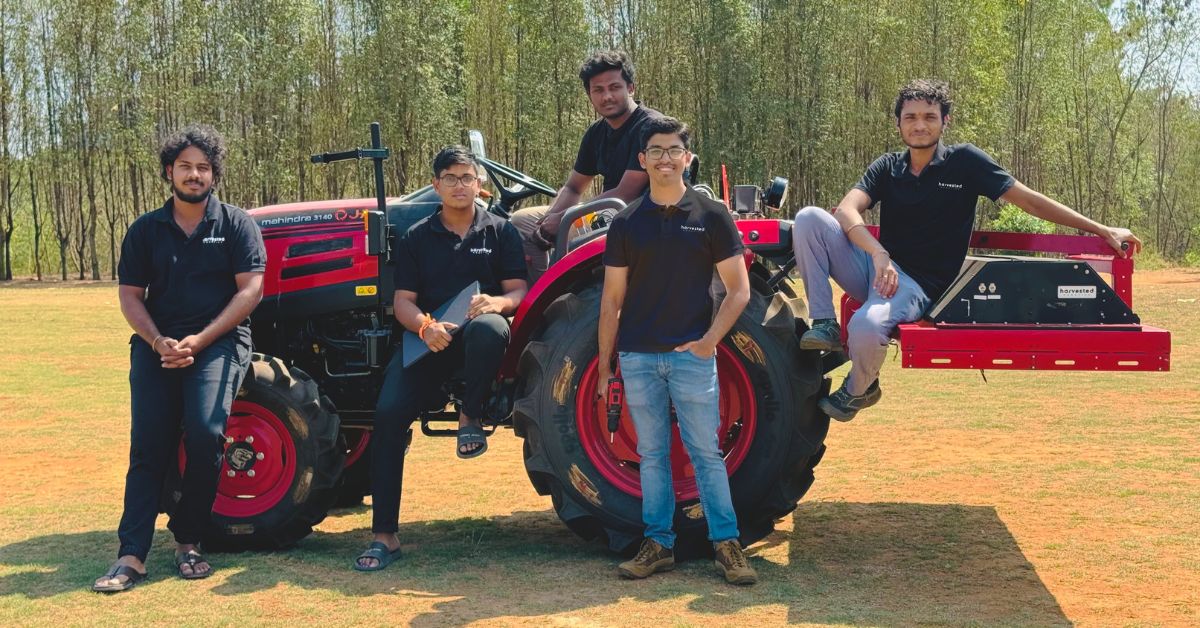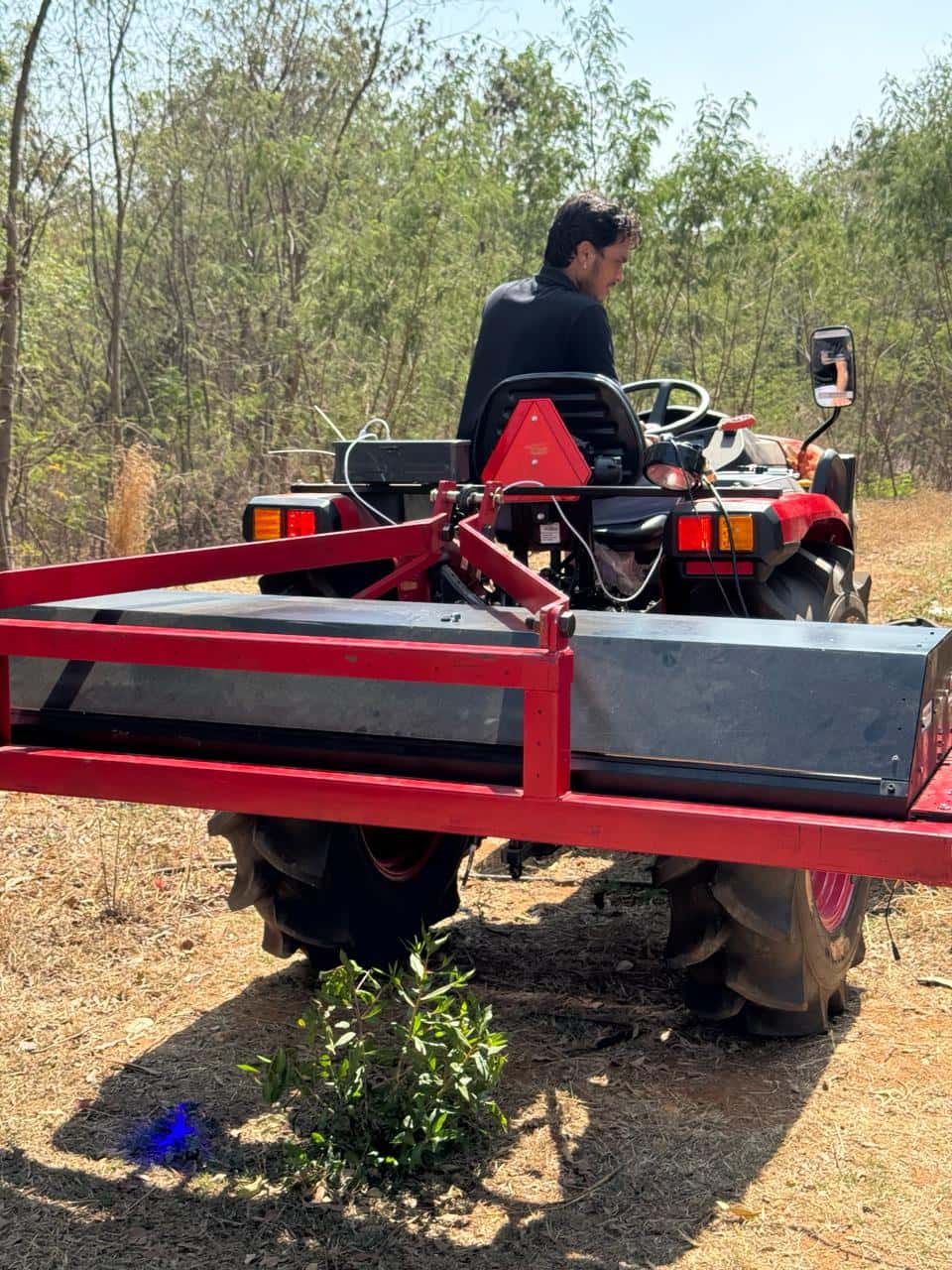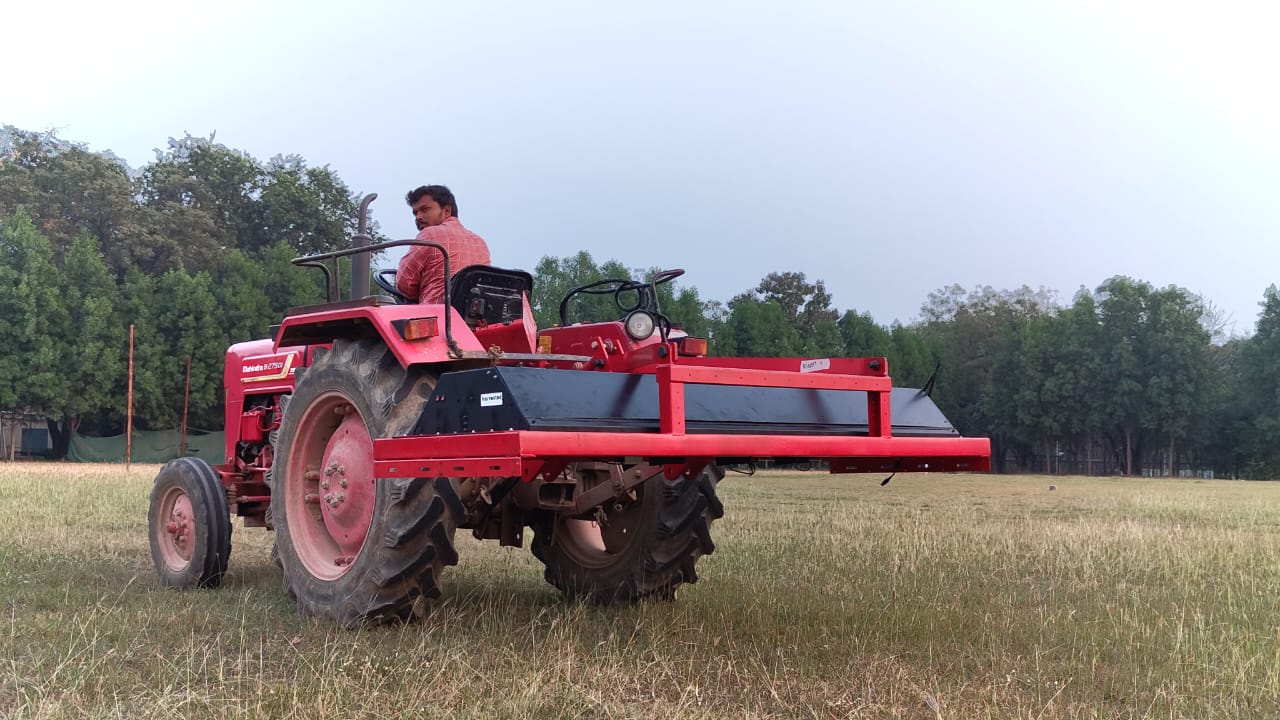Built by Engineering Students, AI-Powered Robot Helps Farmers Cut Expenses & Chemical Use
Founder of Harvested Robotics, Rahul Arepaka (22) built Rakshak, an AI-powered laser-weeding robot that combats weeds without harming the crops. He is now using it to help farmers earn more.

Weeds pose a significant problem for farmers, substantially reducing harvest yields if not addressed on time. The ICAR-Directorate of Weed Research (ICAR-DWR), Jabalpur, estimated that the total losses caused by weeds amount to almost $11 billion per year across 10 major crops in India.
Effective weed management is therefore of prime importance, both in terms of productivity as well as for farmers’ incomes. However, the predominant method of manual weed removal is time-consuming, labour-intensive, and expensive. According to an ICAR-DWR report, weed management accounts for 20 to 25 percent of the total cultivation costs.
“I grow 20 types of vegetables on my farm and need to remove weeds every two weeks. Doing this by hand is expensive and hard work, especially with so many different vegetables, which leads to lots of weeds,” says Prashant T R, a farmer from Madurai.

The other methods of weed removal involve the use of weedicides or herbicides, which are chemicals sprayed on the field to eliminate weeds. Though this is effective, it has a long-term negative impact on the environment and the health of farmers.
Learning about this problem prompted Rahul Arepaka, an engineering student at Mahindra University in Hyderabad, to develop a solution. He built an AI-powered laser-weeding implement called ‘Rakshak’ through his company, Harvested Robotics.
“A farmer spends almost Rs 15,000 for weeding, which has to be done at least three to four times during an entire season. So the total cost sums up to almost Rs 60,000. The other option is using chemicals, but I wanted to build a solution that is good for the farmer as well as the planet,” Rahul tells The Better India.
Precision laser technology to kill weeds

Rahul — who is now in the final year of computer science engineering — participated in many robotics competitions along with his friends, including the World Robotics Olympiad. “We were building farming robots and realised that weeds are a huge problem. During internships at companies like FarmBot, we developed laser-based weed elimination solutions as proof of concept. Through this experience, I identified a gap in the Indian market for a laser weeder,” says Rahul.
Instead of using chemicals or hiring manual labour, Rahul decided to build laser technology for weed management. What started as a brainstorming session in December 2022 evolved into a concrete vision within a few months. Through his university’s incubation programme, he received an initial funding of Rs 5 lakh.
Teaming up with three friends, also final-year engineering students from different disciplines like mechanical and electronics, they embarked on developing a laser technology to combat weeds in June 2023. Over the past 8 months, they have received a total investment of Rs 18 lakh from the university’s incubation centre to further develop this platform.
Rakshak is a tractor-mounted laser weeder built using robotic platforms that utilise precision laser technology for weed eradication, which is paired with individual weed recognition through deep learning algorithms.
While there are some players globally who have built similar solutions, what differentiates Harvested Robotics is the power source of the laser, explains Rahul. “To burn weeds in India, you have to use at least 200 watts of laser source to burn it quickly. The global players use a 1,200-watt laser, which costs them $40,000 just for the laser — a restrictive cost. These lasers also have a very high maintenance cost,” adds the 22-year-old.
To solve this problem, instead of relying on one big power source, Rahul and the team used a bunch of smaller laser sources, which they combined to get the same result. “We have used five different laser sources to get 200 watts on the ground. This way, we were able to significantly reduce the cost, while ensuring even power distribution,” he explains.
How it works
Rakshak eliminates weeds down to their roots. It autonomously identifies weeds using cameras and artificial intelligence, utilising blue laser technology for detection.
“As you drive the tractor, the machine uses computer vision and AI to detect what’s a weed and what’s not. Using precision technology and accuracy, the lasers burn them down. This also reduces the chances of regrowth of weeds,” he adds.
The entire system is powered by the tractor battery itself and doesn’t need any external source for charging. “It doesn’t depend on the horsepower of the tractor. All tractors have a three-point linkage where our implement gets attached. It is powered through the PTO (power take-off) or trolley trailer socket,” he explains, adding that this robotic implement works on almost any tractor, across sizes.
He adds that this method is also a zero-chemical solution.

“We are not using chemicals and not disturbing the soil. It preserves the soil and maintains the crop’s integrity as tilling methods are not used. We concentrate the laser on the stem point of the weed, with a focus on destroying the water cells inside the plant, so that the water-absorbing capacity is lost and the plant dies. The leaves eventually fall out and will become manure for other crops,” adds Rahul.
While weeds tend to grow again in other methods of weed management, this is more sustainable, he claims.
“Laser weeder machines in the US cost a million dollars. Our solution is the most affordable in the world. It will also reduce the number of weeding cycles and time. Such technology is not available in India and we have also applied for a patent,” he says, adding that the other available machines use carbon dioxide-based technology, are huge, and have a high maintenance cost.
“Other solutions use invisible laser technology while we use blue laser light which penetrates faster through chlorophyll,” he adds.
Rahul and his team built the implement over eight months and have conducted trials in farms across India. Harvested Robotics is part of the Microsoft for Startups Founders Hub, and they are also working with Mahindra & Mahindra to test their product. They are gearing up to launch their product in the market in the next few months, and it is expected to be priced at Rs 10 lakh.
For more information, you can contact Rahul at [email protected].
Edited by Pranita Bhat
If you found our stories insightful, informative, or even just enjoyable, we invite you to consider making a voluntary payment to support the work we do at The Better India. Your contribution helps us continue producing quality content that educates, inspires, and drives positive change. Choose one of the payment options below for your contribution- By paying for the stories you value, you directly contribute to sustaining our efforts focused on making a difference in the world. Together, let’s ensure that impactful stories continue to be told and shared, enriching lives and communities alike. Thank you for your support. Here are some frequently asked questions you might find helpful to know why you are contributing?

This story made me
-
97
-
121
-
89
-
167













